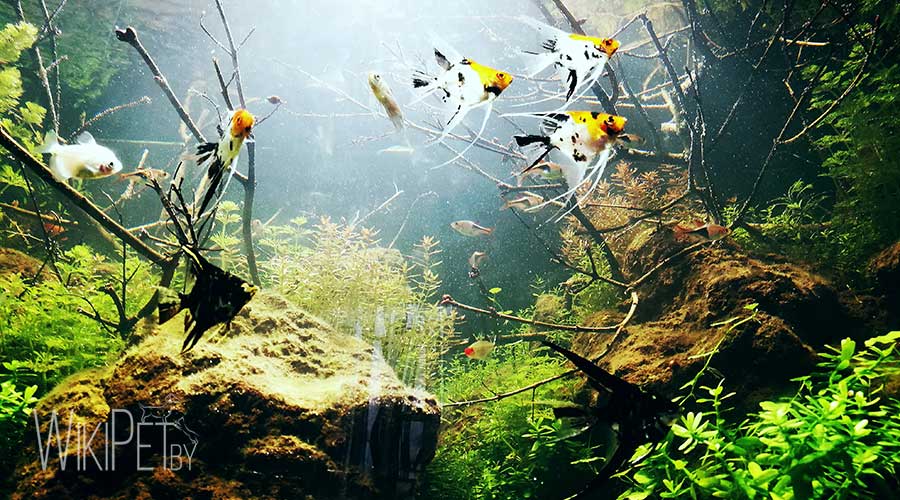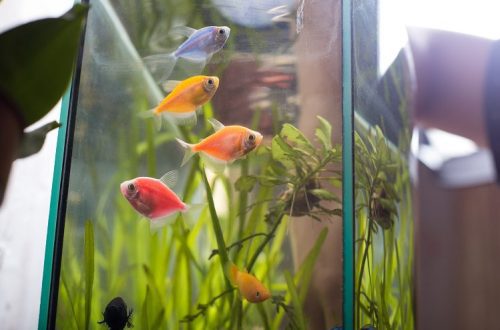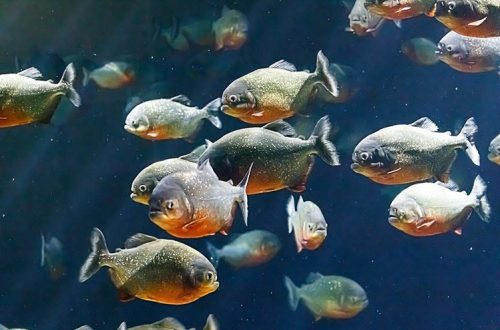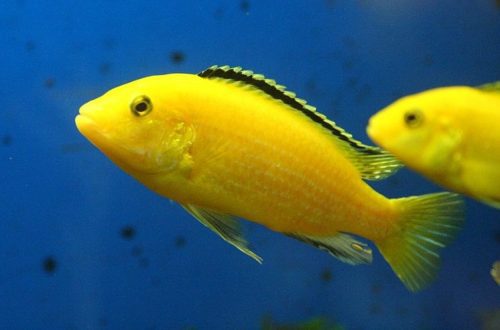
Nature aquarium: big and small fish
Before every aquarist, the question arises: which fish to choose in a natural aquarium – large or small? It is up to you to choose, however, there are features that should be taken into account. There is a fundamental difference in the content of large and small fish in a natural aquarium. Large fish are most often predators, and small ones are mainly herbivores. Herbivorous fish eat 3 times a day (ideally) or, in extreme cases, 2 times a day. Adult predatory fish are fed once every 1 to 2 days, but the feeding process takes about 3 minutes (throw a piece of food, wait until it is eaten, and “deliver” the next one – and so on until the fish is satiated). If large fish are properly fed, the water is always clean and the aquarium looks beautiful, because even if there are residues, they are processed by the filter within two days, and the biological balance of the aquarium is evened out. In addition, as a rule, in addition to large fish, they contain several more small ones (for example, some types of catfish) that eat up what the “giant” has not eaten. Another difference between keeping large fish in a natural aquarium is that they are noticeable. You see how they swim, how they behave. And if she gets sick, then 15 – 1,5 months will pass before she dies. You will have time to diagnose the disease and cure the pet. And if she does die, you will definitely notice it. But if you suddenly don’t notice, the damage will be huge: it will begin to decompose, the water will become cloudy, and all the other fish will also die.

Large fish are more unpretentious to the conditions of detention (it needs to be fed less often and you can change the water less often without compromising the health of the inhabitants of the aquarium). If you choose small fish for a natural aquarium, then you will have to change the water more often, it will be more difficult to notice that the fish are sick, and if you missed the onset of the disease, then after 3-4 days the fish may die, and you may not even see it. Small fish usually cost less than large ones, but owners of small fish go to the pet store more often (buy new plants, fertilizers, replenish the “team “pets, etc.) In one natural aquarium, many different types of small fish can live, and in the case of “giants” you can put in an aquarium, as a rule, no more than 3 – 5 species of inhabitants. In an aquarium where they live small fish, the main focus is on the habitat, and the big one in itself can be the main decoration of your underwater kingdom. Big fish can get bored pretty quickly: you watch the same thing all the time, but tea with small fish has more space for creativity and the picture is constantly changing. An aquarium for large fish is something like a container for overexposure, a kind of pet cage. And small fish in an aquarium of the same volume can create a full-fledged underwater world, an ecosystem.






